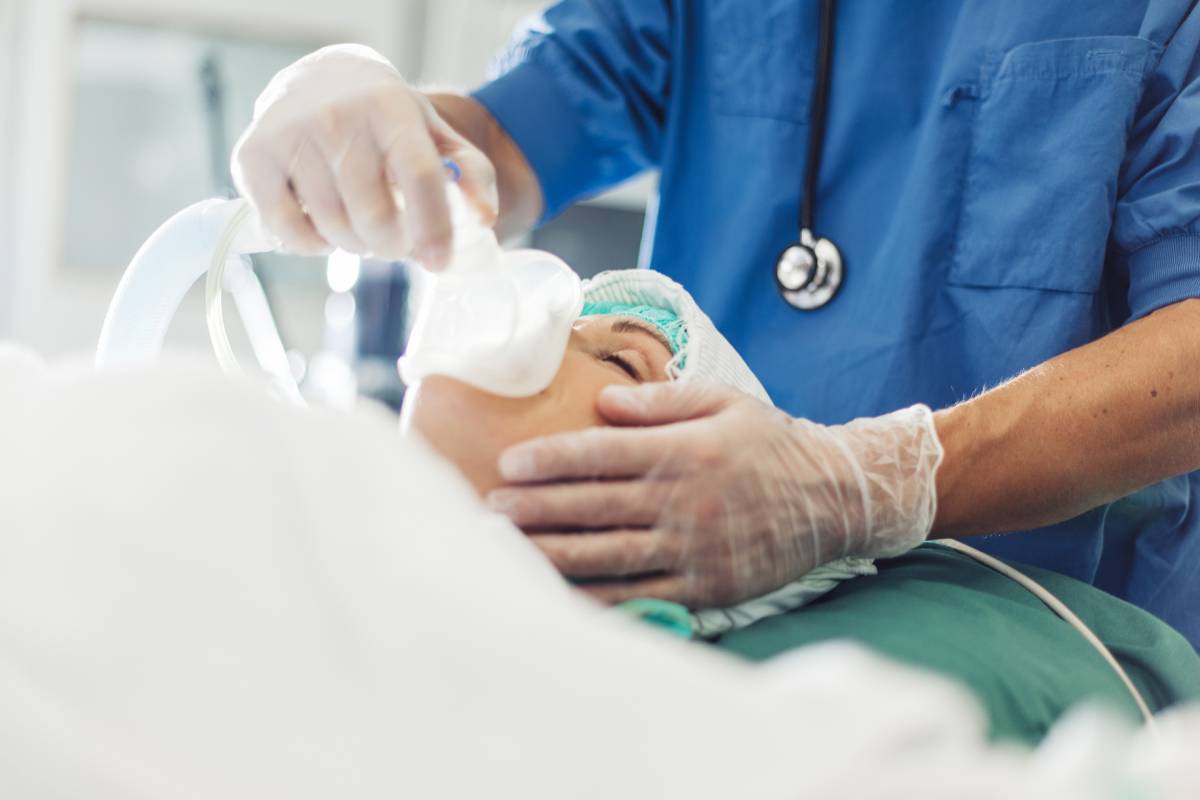Mild hypothermia is frequent under anesthesia, representing the most common perioperative thermal disturbance 1; a drop in core body temperature reaching up to 2°C is not uncommon during anesthesia. However, under both general and regional anesthesia, hypothermia can result in a significant adverse impact on a patient’s well-being. Why does core body temperature decrease under anesthesia and what interventions are needed for observed drops, if any?
Under normal circumstances, thermoregulation occurs according to three main processes. First, afferent input is triggered by thermosensitive receptors in the skin and throughout the body; cold receptors are excited by temperatures under a certain threshold, generating impulses in A-delta nerve fibers. This information is then integrated as it reaches the primary thermoregulatory center of the hypothalamus, which accordingly coordinates the efferent outputs to regulate body temperature by altering blood flow, sweating, muscle tone, and metabolic activity. In so doing, heat loss is minimized by vasoconstriction and decreased sweating, while heat production is promoted by shivering, which also increases an individual’s overall metabolic rate.
Drops in temperature under anesthesia results from the exposure of a patient to a cold environment alongside their inability to initiate behavior responses, but also from the proclivity of both general and regional anesthetic agents to promote heat loss.
Volatile anesthetics, propofol, and opioids such as morphine and meperidine generate heat loss through vasodilation. This is further compounded by the fact that these drugs directly impair hypothalamic thermoregulation in a dose-dependent manner. In particular, opioids’ depressant effects on the hypothalamus result in an increased threshold for heat response, increasing the normal inter-threshold body temperature range from approximately 0.2°C to as much as 4°C. Furthermore, opioids additionally depress overall sympathetic outflow, further exacerbating anesthesia-induced decreases in core body temperature 2.
The physiological effects of hypothermia may have significant detrimental consequences. Major consequences of inadvertent hypothermia include a threefold increase in morbid myocardial events (such as cardiac arrhythmias and ischemia) 3, increased peripheral vascular resistance and impaired coagulation, a threefold increase in the risk of surgical wound infection alongside impaired wound healing 4, compromised renal function, reduced drug metabolism, and altered mental status 2. Larger drops in temperature may result in even more severe consequences.
Hypothermia prevention is its best management method. Prior to surgery, it is important to dress patients appropriately since up to 85% of heat loss occurs through the skin. Patients may also be preoperatively warmed using forced-air systems. Meanwhile, the operating room should remain 24°C during induction and while the patient is prepared for surgery.
Intraoperatively, the administration of general anesthesia will warrant the continuous monitoring of vital parameters, including body temperature. Disposable thermocouple and thermistor probes may be used to this end to measure core temperature as reflected at the tympanic membrane, esophagus, nasopharynx, or rectum. In addition, the warming of IV fluids may help to minimize intraoperative heat loss. Such efforts to maintain intraoperative body core temperature above 36°C are key to improving the quality and safety of anesthetic care.
Changes in body temperature occur commonly under anesthesia. However, severe hypothermia should be prevented when possible and addressed rapidly when it occurs 5. This said, while guidelines for the perioperative temperature management have been proposed, there remain no specific guidelines regarding the best site or best modality of temperature monitoring and management intraoperatively; research to develop such best practices is warranted into the future.
References
1. Sessler, D. I. Mild Perioperative Hypothermia. N. Engl. J. Med. (1997). doi:10.1056/nejm199706123362407
2. Díaz, M. & Becker, D. E. Thermoregulation: physiological and clinical considerations during sedation and general anesthesia. Anesth. Prog. (2010). doi:10.2344/0003-3006-57.1.25
3. Frank, S. M. et al. Perioperative maintenance of normothermia reduces the incidence of morbid cardiac events: A randomized clinical trial. Am. J. Rhinol. (1997). doi:10.1097/00005392-199807000-00145
4. Kurz, A., Sessler, D. I. & Lenhardt, R. Perioperative normothermia to reduce the incidence of surgical-wound infection and shorten hospitalization. Study of Wound Infection and Temperature Group [see comments]. N Engl J Med (1996). doi: 10.1056/NEJM199605093341901.
5. Bindu, B., Bindra, A. & Rath, G. Temperature management under general anesthesia: Compulsion or option. Journal of Anaesthesiology Clinical Pharmacology (2017). doi:10.4103/joacp.JOACP_334_16


